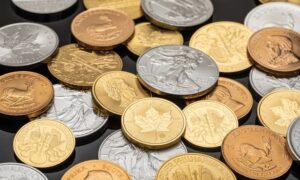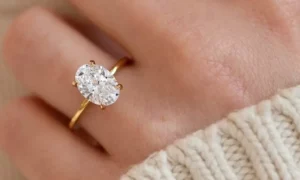If you’re an active investor, you’ve probably gotten some advice to balance your portfolio with the help of precious metals and gems. But are precious metals and gems, like diamonds and gold, a good investment?
General Advantages of Precious Metals and Gems
These are some of the best advantages offered by precious metals and gemstones:
- Tangibility. Some people like to invest in precious metals and gemstones because they exist in a tangible form. You don’t have to trust a bank or financial institution to hold the virtual version of your currency; you can store and transport your wealth as you see fit.
- (Limited) liquidity. In some areas, gold and silver are considered legitimate currencies. Though you may find it difficult to use gold to pay for common goods like groceries, this investment does have some inherent liquidity.
- Inflation resistance. Precious metals are often seen as an effective hedge against inflation. That’s because many investors regard precious metals to hold true, inherent value; they aren’t subject to the same fluctuations as the dollar.
- Reputation as a “safe haven.” Precious metals also have a reputation as a safe haven during periods of economic volatility. When people suspect a recession in the near future, they tend to hoard precious metals, increasing their value.
- Diversification options. Diversifying your portfolio is always a smart idea and these commodities could be exactly what you need to distribute risk effectively. Their performance isn’t tied to the performance of other markets, like the stock market or real estate market.
- Growth potential. If you invest at the right time, the major financial fluctuations associated with precious metals and gemstones could allow you to multiply your initial investment many times over.
General Disadvantages of Precious Metals and Gems
However, there are some disadvantages to consider:
- Volatility and unpredictability. Precious metals and gemstones are known for their volatility. As we stated in our previous section, this volatility can be an advantage; but it can also be a disadvantage. If you buy at the wrong time, you could end up losing money.
- Lack of consistent growth. Stocks, real estate, and other traditional investments have stable, predictable growth patterns, even in the face of occasional downturns. With precious metals and gemstones, growth is less consistent and less predictable.
- Cost of entry. It can be hard to get involved with precious metal and gemstone investing. Finding a reputable, licensed dealer can be tough, and you may be responsible for additional fees to buy what you want. Fortunately, there are some easy ways around this, such as purchasing precious metals through an ETF.
- Storage issues. Some precious metal investors are troubled by transportation and storage issues. Most metals are extremely heavy and cumbersome, meaning they’re difficult to transport from one place to the other and you’ll need to have a designated area of your home in which to store them. You’ll also need to think about security since if someone breaks into your home and gains access to your physical assets, they could steal them without leaving a trace.
- Lack of interest or income. Unlike other types of investments, metals and gemstones don’t generate interest or income automatically.
Individual Options
These are some of the most common options for investors:
- Gold. Gold is one of the best-known precious metals for investors, in part because of its ubiquity and long history. It has a history as a form of currency, so it’s been a reliable economic safe haven for centuries.
- Silver. Silver is somewhat more volatile, but silver also has more practical applications. It has long been a rival to gold in terms of durability and reliability.
- Platinum. Platinum is an even rarer substance, and one with a variety of important industrial applications (including use in automotive catalysts). However, because of its limited supply, it suffers from volatility.
- Gemstones. Diamonds and other gemstones are prized for their use in jewelry, and they have long-lasting value retention, on average. Individual gemstones vary in terms of value, durability, practicality, and ease of purchase.
- ETFs. Instead of investing in precious metals or gemstones directly, you can invest in them indirectly with exchange-traded funds (ETFs). This could be a low-cost, convenient alternative to direct purchasing – and allow you to diversify your holdings simultaneously.
- Futures and options. If you want to take advantage of financial leverage, you may also choose to invest in futures and options, trading on speculated future prices rather than the current prices.
Precious metals and gemstones can be tricky options to navigate, especially if you’re a new investor. There are many options to choose from, and some of them can be volatile. Still, these commodities have a long history of retaining their value and they could be exactly what you need to protect against inflation or economic uncertainty.



































